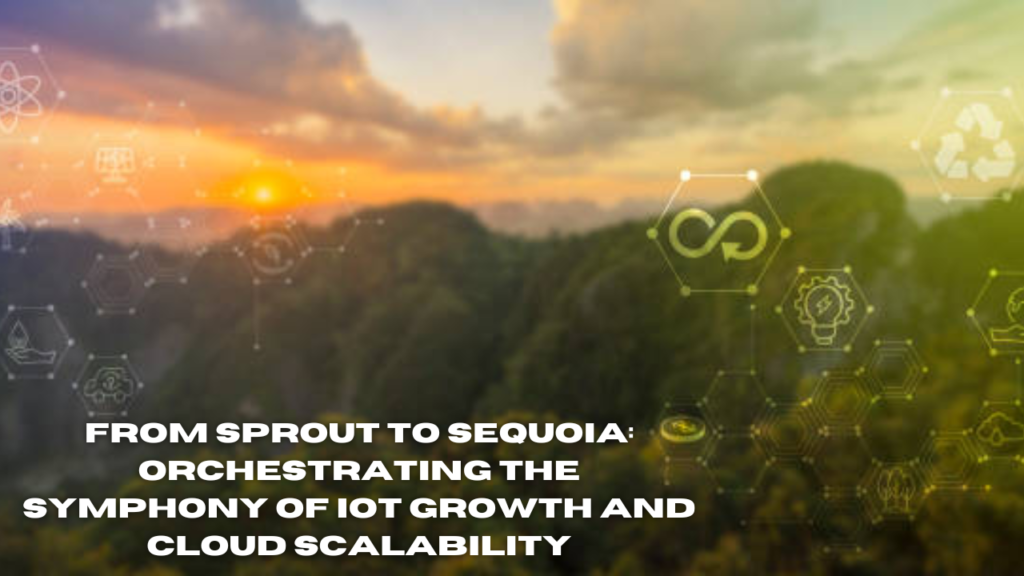The rapid evolution of technology has brought the world closer, smaller, and more interconnected. At the heart of this transformation lies the Internet of Things (IoT), a sprawling ecosystem that connects devices, people, and data. The journey of IoT, much like the growth of a towering sequoia tree from a humble sprout, requires careful nurturing, seamless orchestration, and strategic scalability. From sprout to sequoia: orchestrating the symphony of IoT growth and cloud scalability epitomizes this transformative journey, emphasizing the need for harmony and foresight in managing IoT’s exponential growth.
The Early Stages: Planting the Seeds of IoT
Every IoT system begins as a sprout, a small-scale implementation tailored to solve specific problems. These initial deployments often focus on connecting several devices to gather data and provide actionable insights. Consider a smart home setup where devices like thermostats, lights, and cameras communicate seamlessly. While simple in design, this setup lays the foundation for more complex applications.
However, even at this stage, key considerations include:
Interoperability: Ensuring devices from different manufacturers can communicate effectively.
Security: Protecting data from unauthorized access and breaches.
Data Management: Establishing protocols for collecting, storing, and analyzing data.
These early decisions shape the trajectory of growth and scalability, much like the roots of a tree determining its stability and reach.
Scaling Up: The Challenges of Growth
As IoT systems expand, they evolve into intricate networks with thousands, if not millions, of interconnected devices. This growth brings significant challenges, including:
Data Overload: The sheer volume of data generated by IoT devices can overwhelm traditional storage and processing systems. For instance, sensors in a smart city can produce terabytes of data daily.
Latency and Real-Time Processing: Applications like autonomous vehicles or industrial automation demand near-instantaneous data processing. Any delay can result in catastrophic outcomes.
Security Risks: More devices mean a larger attack surface for cyber threats. Ensuring secure communication and data protection becomes increasingly complex.
To address these challenges, IoT systems rely heavily on cloud computing, which provides the scalability and flexibility required to manage growth.

Cloud Computing: The Backbone of IoT Scalability
The integration of IoT with cloud computing transforms potential limitations into opportunities. The cloud is a robust platform, enabling seamless scalability while ensuring cost efficiency and reliability. Here’s how:
Scalable Infrastructure: Cloud platforms like AWS, Azure, and Google Cloud offer elastic resources that can scale up or down based on demand. This flexibility is crucial for IoT systems that experience fluctuating workloads.
Data Analytics and AI: Cloud-based analytics tools and machine learning algorithms help process and interpret IoT data, uncovering patterns and insights that drive innovation.
Global Reach: The cloud’s global network ensures consistent regional performance, supporting IoT applications in diverse geographies.
Cost Efficiency: Pay-as-you-go models reduce upfront costs, allowing businesses to invest in growth without financial strain.
The synergy between IoT and cloud computing creates a symphony where each element plays its part to achieve seamless harmony.
Orchestrating the Symphony: Best Practices
Achieving scalable and efficient IoT systems requires strategic orchestration. Here are key practices to ensure a harmonious interplay between IoT growth and cloud scalability:
Design for Scalability: From the outset, Design IoT systems with future growth in mind. Modular architectures allow for easy expansion.
Prioritize Security: Implement end-to-end encryption, robust authentication protocols, and regular security audits to protect data and devices.
Leverage Edge Computing: While the cloud is essential, edge computing can reduce latency by processing data closer to its source. This hybrid approach ensures real-time responsiveness.
Adopt Automation: Automate deployment, monitoring, and management of IoT devices to reduce human error and improve efficiency.
Monitor and Optimize: Monitor system performance and optimize resources to prevent bottlenecks and ensure smooth operation.
Real-World Applications: IoT and Cloud in Action
The symphony of IoT growth and cloud scalability is already transforming industries. Here are some examples:
Smart Cities: IoT sensors monitor traffic, air quality, and energy consumption. The cloud processes this data, enabling real-time decisions and long-term planning.
Healthcare: Wearable devices collect patient data, which is analyzed in the cloud to provide personalized treatment plans and early disease detection.
Agriculture: IoT devices track soil moisture, weather conditions, and crop health. Cloud-based platforms use this data to optimize irrigation and maximize yield.
Manufacturing: Industrial IoT systems monitor equipment health and predict maintenance needs, minimizing downtime and improving productivity.
Looking Ahead: From Sequoia to Forest
The journey from sprout to sequoia is not the endpoint but a stepping stone. As IoT systems mature, they will integrate with emerging technologies like blockchain, quantum computing, and advanced AI to create even more sophisticated ecosystems. The ultimate vision is a forest of interconnected systems that drive innovation, sustainability, and human progress.

Also Read: Connecting the Dots: Unraveling IoT Standards and Protocols
Final Reviews
From sprout to sequoia: orchestrating the symphony of IoT growth and cloud scalability is more than a metaphor; it’s a roadmap for navigating the complexities of IoT evolution. By fostering seamless integration, prioritizing scalability, and embracing innovation, we can unlock the full potential of IoT and cloud technologies. This harmonious journey promises not just growth but a transformative impact on industries and society as a whole.











